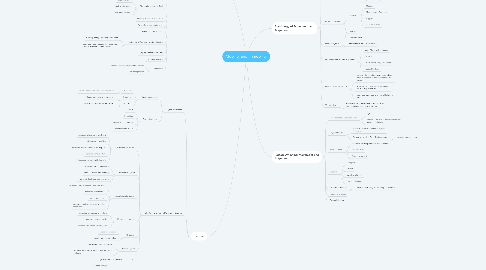
1. Nursing Process for Activity
1.1. Assessing
1.1.1. interview and physical assessment
1.2. Nursing History
1.2.1. daily activity level
1.2.2. endurance
1.2.3. exercise and fitness goals
1.2.4. mobility problems
1.2.5. physical or mental alterations
1.2.6. external factors
1.3. Physical Assessment
1.4. Diagnosing
1.4.1. identify the complications of immobility for which patient is at great risk
1.5. Outcome Identification and Planning
1.5.1. directed toward the promotion of physical fitness
1.6. Implementing
1.6.1. use of ergonomics
1.7. Application of Ergonomics to Prevent Injury
1.7.1. movement required and use of equipment necessary to provide patient care
1.8. Ensuring Safe Patient Handling and Movement
1.8.1. patient assessment criteria, algorithms for patient handling decisions and proper use of patient handling equipment
1.9. Positioning Patients in Bed
1.9.1. correct body alignment and facilitates physiologic functioning
1.10. Using Graduated Compression Stockings and Pneumatic Compression Devices
1.10.1. passive interventions prescribed to aid in the preventions of these complications
1.11. Turning Patient in the Bed
1.11.1. back onto side
1.11.2. back to abdomen
1.11.3. abdomen to back
1.12. Moving Patient up in the Bed
1.13. Patient from bed to stretcher
1.14. patient from bed to chair
1.15. Assissting w/ Range-of-Motion Exercise
1.15.1. bathing, eating, dressing and writing
1.15.2. helps use muscle groups that keep many joints in effective range of motion
1.16. Helping Patients Ambulate
1.17. Promoting Exercise
1.18. Evaluating
1.18.1. general ease of mopvement and gait
1.18.2. body alignment
2. Exercise
2.1. Types of Exercise
2.1.1. Muscle contraction
2.1.1.1. Isotonic
2.1.1.1.1. muscle shortening and active movement
2.1.1.2. Isometric
2.1.1.2.1. Muscle contract w/o shortening
2.1.1.3. Isokinetic
2.1.1.3.1. muscle contractions w/ resistance
2.1.2. Body Movement
2.1.2.1. aerobic
2.1.2.2. Stretching
2.1.2.3. Strength and Endurance
2.1.2.4. movement and ADLs
2.2. Effects of Exercise on Major Body Systems
2.2.1. Cardiovascular System
2.2.1.1. increased efficiency of the heart
2.2.1.2. decreased hr and bp
2.2.1.3. increased blood flow to all body parts
2.2.1.4. improved venous return
2.2.1.5. increased circulating fibrinolysin
2.2.2. Respiratory System
2.2.2.1. Improved alveolar ventilation
2.2.2.2. decreased work of breathing
2.2.2.3. improved diaphragmatic excursion
2.2.3. Musculoskeletal System
2.2.3.1. increased muscle efficiency and flexibility
2.2.3.2. increased coordination
2.2.3.3. reduce bone loss
2.2.3.4. increased efficiency of nerve impulse transmission
2.2.4. Metabolic Processes
2.2.4.1. Increased triglyceride breakdown
2.2.4.2. increased gastric motility
2.2.4.3. increased production of body heat
2.2.5. GI System
2.2.5.1. apetite is increased
2.2.5.2. weight may be controlled
2.2.6. Urinary System
2.2.6.1. increases blood circulation
2.2.6.2. maintain body's fluid balance and acid-base balance
2.2.7. Skin
2.2.7.1. general health of the skin
2.2.8. Psychosocial Outlook
2.2.8.1. increase energy
2.2.8.2. improve sleep
2.2.8.3. improve appearance
2.2.8.4. improve self-concept
2.2.8.5. increase positive health behaviors
2.3. Risks Related to Exercise
2.3.1. Percipitation of Cardiac Event
2.3.2. Orthopedic Discomfort and Disability
2.3.3. other Health Problems
2.3.3.1. temp on a given day
2.3.3.2. safety on neighborhood
2.3.3.3. humidity
2.3.3.4. pollution index
2.4. Effects of immobility on the Body
2.4.1. Cardiovascular System
2.4.1.1. increased cardiac workload
2.4.2. Respiratory System
2.4.2.1. increased respiratory secretions
2.4.3. Musculoskeletal System
2.4.3.1. confined to bed= weak legs
2.4.4. Metabolic Processes
2.4.4.1. demand for oxygen is decreased= decreaced metabolic rate
2.4.5. GI System
2.4.5.1. disturbances in apetite
2.4.6. Urinary System
2.4.6.1. uti
2.4.7. Skin
2.4.7.1. serious skin breakdown
2.4.8. Psychosocial Outlook
2.4.8.1. sense of self is threatened
3. Physiology of Movement and Alignment
3.1. Skeletal System
3.1.1. 206 bones
3.1.1.1. Long
3.1.1.1.1. upper and lower extremeties
3.1.1.2. Short
3.1.1.2.1. Movement
3.1.1.3. Flat
3.1.1.3.1. contribute to shape
3.1.1.4. Irregular
3.1.2. Joints
3.1.2.1. Ball and Socket: shoulder and hip joint
3.1.2.2. Condyloid: Wrist joint and connecting fingers to palm
3.1.2.3. Gliding: carpal bones of wrist and tarsal bones of feet
3.1.2.4. Hinge: elbow, knee, ankle
3.2. Muscular System
3.2.1. skeletal
3.2.1.1. Motions
3.2.1.2. Maintenance of posture
3.2.1.3. Support
3.2.1.4. Heat production
3.2.2. cardiac
3.2.3. smooth/viceral
3.3. Nervous System
3.3.1. stimulates muscles to contract
3.4. Normal Movement and Alignment
3.4.1. Body Alignment or Posture
3.4.2. Balance
3.4.3. Coordinated Body Movement
3.4.4. Postural Reflexes
3.5. Patient Care Ergonomics
3.5.1. practice of designing equipment and work tasks to conform to the capability of the worker
3.5.2. Adjusting work environment and work practice to prevent injuries
3.5.3. weakness, dizziness, and fear of falling in tub
3.6. Orthopedics
3.6.1. the correction or prevention of disorders of body structures used in locomotion
4. Factors Affecting Movement and Alignment
4.1. Developmental Considerations
4.1.1. Age
4.1.2. degree of neuromuscular development markedly influence
4.2. Physical Health
4.2.1. Muscular, Skeletal or Nervous System Problems
4.2.2. Problems Involving Other Body systems
4.2.2.1. acute or chronic illness
4.3. Mental Health
4.3.1. influences body appearance and movement
4.3.2. Body posture
4.3.3. Facial movement
4.4. Lifestyle
4.4.1. Occupation
4.4.2. Leisure
4.4.3. activity preference
4.4.4. cultural influences
4.5. Attitude and Values
4.5.1. children learn early to value regular exercise
